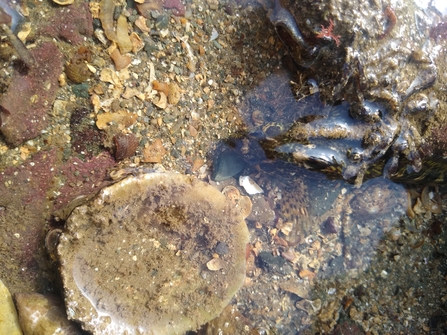Cemlyn is celebrating its 50th Anniversary this year and the protection it receives comes under the Special Protection Area (SPA) for the breeding terns and a Special Area of Conservation (SAC) for the terrestrial environment. For lots more info, Cemlyn Wardens have a Facebook page by that name and they've also written a blog or two. While there, we surveyed to a sound track of passing sandwich terns heading back and forth to feed their chicks. We visited the North Llŷn in an area within the huge Pen Llyn Ar Sarnau (SAC), as well and the shore at Colwyn bay (Liverpool Bay SPA) for another early morning survey.
We tried out the walkover survey this time instead of the biodiversity/quadrat survey. This is carried out by walking along a line within the different shore heights documenting everything you can find and ID. Thoughts are that initially, it can be just presence and absence, but it can lead to estimating numbers and percentage cover too.
Number of volunteers overall – 7
Number of walked transects carried out – 2 lowshore, 7 midshore.







